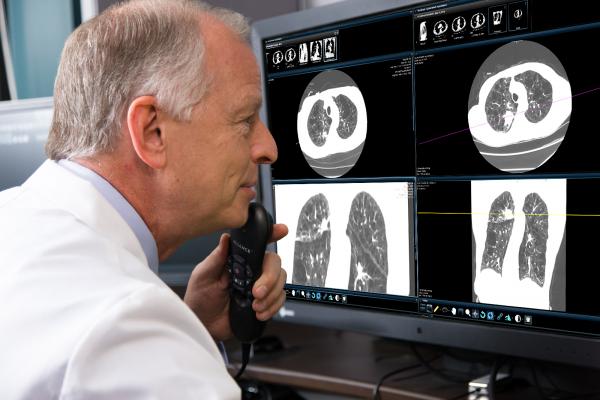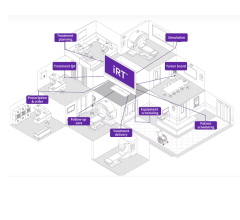
Image courtesy of Cerner
July 8, 2020 — Changes outlined in new draft U.S. Preventive Services Task Force (USPSTF) lung cancer screening recommendations will greatly increase the number of Americans eligible for screening and help medical providers save thousands more lives each year, according to a new statement issued by the American College of Radiology (ACR). The American College of Radiology strongly supports the USPSTF proposal to lower the starting age for screening from 55 to 50 and the smoking history requirements from 30 pack-years to 20 pack-years. The ACR encourages efforts to expand screening — particularly among minorities and women. The College will provide further input to the USPSTF in the coming weeks.
Annual lung cancer screening with low-dose computed tomography (LDCT) in high-risk patients significantly reduces lung cancer deaths.[1],[2] This screening can identify cancers at an early, treatable and curable stage. Given that the American Cancer Society predicts 135,720 lung cancer deaths this year, more-widespread screening could save 30,000–60,000 lives in the United States each year.
The ACR recommends that — to save more lives from lung cancer:
- The USPSTF should lower the starting age for screening from age 55 to age 50 and the smoking history requirements from 30 pack-years to 20 pack-years.
- The USPSTF should extend the quit-smoking requirement from 15 years to 20 years.
- Medical providers must get familiar with lung cancer screening guidelines and prescribe these exams for high-risk patients. Today, only a fraction of the recommended population is screened.
“Lung cancer kills more people each year than breast, colon and prostate cancers combined. Particularly with the new more-sensible pack-year threshold, if implemented nationwide, this cost-effective test would save more lives than any cancer-screening test in history. Primary care providers and thoracic specialists should support the proposed lower starting age and more-inclusive pack-year threshold, and order these scans for their high-risk patients,” said Debra Dyer, M.D., FACR, chair of the American College of Radiology (ACR) Lung Cancer Screening 2.0 Committee.
“It's great to see the draft USPSTF proposal extending the reach of this massive lifesaving benefit to more people at risk. The threat to older current and former smokers from this disease, means we must do all we can to ensure patients are appropriately referred and have widespread access to lung cancer screening CT. The lower starting age and broader pack-year threshold will help save more lives from the nation’s leading cancer killer,” said Ella Kazerooni M.D., MS, FACR, chair of the ACR Lung-RADS committee and Lung Cancer Screening Registry.
For more information: www.acr.org


 December 04, 2025
December 04, 2025 









